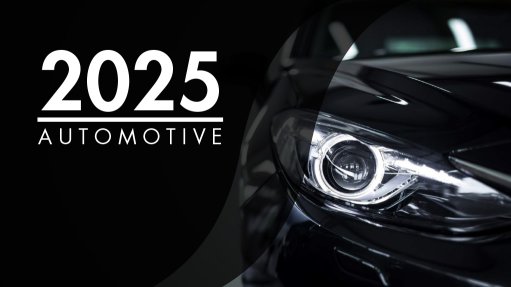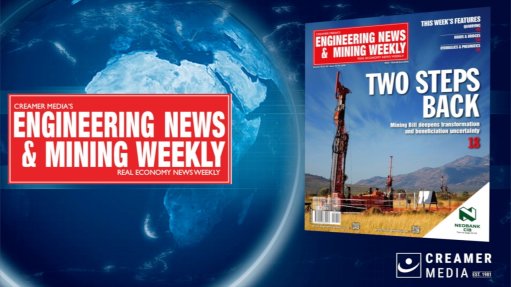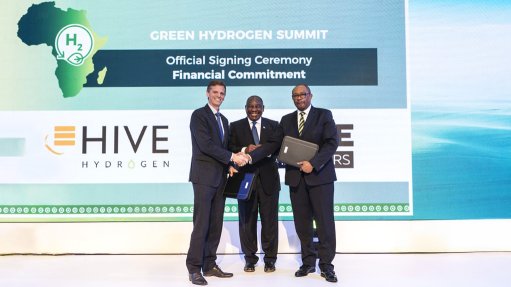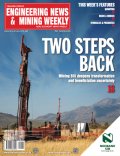Evaluating Embedded vs Wheeled Energy Opportunities
This article has been supplied by the author and has not been written or solicited by Creamer Media. It may be available only for a limited time on this website.
By: Jonathan Hill – Commercial Director for SOLINK
In an age of rapidly changing energy markets, understanding the nuances between embedded and wheeled energy systems is crucial for organizations looking to make informed decisions about their energy needs. Jonathan Hill, Commercial Director at SOLINK, shares his insights on the topic, highlighting the differences in efficiency, cost, and regulatory challenges between these two energy solutions.
What Are Embedded and Wheeled Energy Systems?
Before diving into the key comparisons, it’s important to understand the foundational differences between embedded and wheeled energy systems.
Embedded Energy refers to systems where energy generation happens on-site, behind the utility meter. This often involves solar PV systems or other renewable energy technologies installed on a property, with the energy consumed directly at the point of generation. Essentially, the energy produced is used to offset what is being drawn from the grid.
Wheeled Energy, on the other hand, involves generating energy at a location away from the end-user, often hundreds of kilometers away. This energy is then fed into the transmission or distribution network, eventually reaching the consumer. In this case, the physical energy is produced off-site, and the financial accounting of the energy usage is managed via a rebate system.
Efficiency and Output: Embedded vs. Wheeled Energy
When it comes to efficiency, the location of the energy generation plays a crucial role. As Jonathan Hill explains:
“In most cases, wheeled energy systems—whether it’s solar farms or wind farms—are located in areas with the best natural resources. A solar farm will be built in a high-radiance area, while a wind farm will be placed in a region with consistent, strong winds.”
This optimal locating allows for higher energy output compared to embedded systems, where the generation is tied to the location of the property and its available resources. In the case of rooftop solar, the amount of solar radiation may vary depending on the geographical location, available space and local soiling conditions, which can limit the system’s efficiency.
While the efficiency of wheeled systems tends to be higher due to ideal location selection, embedded systems are not without their advantages. Embedded systems, like rooftop solar panels, have the benefit of being close to the point of consumption which minimise power losses, which are experienced in transmission and distribution networks when energy is generated remotely and transported over long distances to the user.
The Impact of Technological Advancements
Technological advancements have dramatically impacted both embedded and wheeled energy systems in recent years, making renewable energy solutions more cost-effective and accessible.
“The cost of renewable energy components, especially solar PV panels, has reduced significantly over the last five years. In fact, we’ve seen a drastic reduction even within the past year alone,” Hill notes.
As a result, the number of embedded energy projects has surged, as organizations take advantage of declining costs and the desire for greater energy independence. Furthermore, innovations like battery storage systems are helping to address some of the inherent inefficiencies of renewable energy. Solar PV systems combined with battery energy storage can help mitigate the challenges of intermittent energy generation, providing security of supply even during load shedding or peak demand times.
On the wheeled energy side, the introduction of utility-scale batteries and a more competitive market is paving the way for greater flexibility and efficiency in energy distribution. This move toward a more open and competitive market will likely lead to better pricing options for consumers.
Regulatory Challenges and Market Dynamics
The regulatory environment plays a significant role in both embedded and wheeled energy systems. As Hill points out, the policies surrounding wheeled energy systems are heavily influenced by government regulation and the ability to interact with national and local distribution networks:
“As the market matures, the regulatory framework around wheeled energy is opening up, with more private players entering the space and creating a competitive wholesale market.”
This shift could change how energy is procured and priced, creating new opportunities for organizations looking to participate in wheeled energy markets. However, regulatory changes can also create uncertainties, and navigating the ever-changing landscape requires vigilance.
On the embedded energy side, understanding local grid codes, technical requirements, and tariff structures is key to evaluating the feasibility and financial return of such projects. Organizations need to assess their energy usage patterns and consider how an embedded system—especially one with solar PV and storage—will interact with their overall energy consumption.
Finding the Best Fit for Your Organization
When evaluating the two types of energy systems, it’s important to understand the energy needs, location, and regulatory constraints of your organization. Hill recommends a balanced approach:
“Organizations should aim to maximize their embedded energy systems by utilizing solar PV and battery energy storage, then look for wheeled options to cover the remaining load. By combining these two, they can optimize their energy use while staying aligned with financial and regulatory considerations.”
A hybrid model, where the majority of energy needs are met by embedded systems and the remainder is supplemented through wheeled energy options, could be the most effective strategy for many organizations. This approach allows businesses to take advantage of technological advancements in solar energy and storage while still benefiting from the competitive pricing and flexibility offered by wheeled energy solutions.
The Future of Energy: Technological and Regulatory Innovations
Both embedded and wheeled energy systems are experiencing significant innovations that promise to reshape the energy landscape. From advancements in battery storage technology to the rise of a more liberalized and competitive wheeled energy market, the future looks promising.
“As we move toward a more competitive energy market, we’ll see increased competition on prices and a greater role for private sector players, creating a more dynamic energy landscape,” Hill concludes.
Whether you are considering embedded or wheeled energy solutions, staying informed on the latest technological trends and regulatory changes will be key to making the right choice for your organization’s energy needs. At the forefront of these innovations, companies like SOLINK are working to help businesses navigate these opportunities and implement sustainable, cost-effective energy solutions.
The choice between embedded and wheeled energy systems ultimately depends on a variety of factors, including energy usage patterns, geographical location, regulatory considerations, and technological advancements. By carefully evaluating these elements, organizations can select the energy solution that best aligns with their long-term sustainability goals and financial objectives. As the energy market continues to evolve, both embedded and wheeled energy systems offer unique opportunities for those willing to embrace change and innovation.
Comments
Announcements
What's On
Subscribe to improve your user experience...
Option 1 (equivalent of R125 a month):
Receive a weekly copy of Creamer Media's Engineering News & Mining Weekly magazine
(print copy for those in South Africa and e-magazine for those outside of South Africa)
Receive daily email newsletters
Access to full search results
Access archive of magazine back copies
Access to Projects in Progress
Access to ONE Research Report of your choice in PDF format
Option 2 (equivalent of R375 a month):
All benefits from Option 1
PLUS
Access to Creamer Media's Research Channel Africa for ALL Research Reports, in PDF format, on various industrial and mining sectors
including Electricity; Water; Energy Transition; Hydrogen; Roads, Rail and Ports; Coal; Gold; Platinum; Battery Metals; etc.
Already a subscriber?
Forgotten your password?
Receive weekly copy of Creamer Media's Engineering News & Mining Weekly magazine (print copy for those in South Africa and e-magazine for those outside of South Africa)
➕
Recieve daily email newsletters
➕
Access to full search results
➕
Access archive of magazine back copies
➕
Access to Projects in Progress
➕
Access to ONE Research Report of your choice in PDF format
RESEARCH CHANNEL AFRICA
R4500 (equivalent of R375 a month)
SUBSCRIBEAll benefits from Option 1
➕
Access to Creamer Media's Research Channel Africa for ALL Research Reports on various industrial and mining sectors, in PDF format, including on:
Electricity
➕
Water
➕
Energy Transition
➕
Hydrogen
➕
Roads, Rail and Ports
➕
Coal
➕
Gold
➕
Platinum
➕
Battery Metals
➕
etc.
Receive all benefits from Option 1 or Option 2 delivered to numerous people at your company
➕
Multiple User names and Passwords for simultaneous log-ins
➕
Intranet integration access to all in your organisation


















